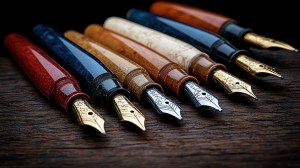Understanding the Value of Your Restored Vintage Radio: What Collectors Look For
Restoring vintage radios is more than just a hobby; it’s a passion that connects you to the past while preserving a piece of history. Whether you’ve inherited an old radio or stumbled upon one at a flea market, understanding its value can enhance your appreciation for this timeless technology. In this article, we will explore what collectors look for when assessing the value of restored vintage radios, helping you not only restore but also potentially profit from your efforts.
Authenticity Matters
One of the first things collectors consider when evaluating a restored vintage radio is its authenticity. This means ensuring that the restored radio retains as many original parts as possible. Using original components increases its historical value and appeals to collectors who seek genuine pieces rather than replicas or heavily modified versions. When restoring your radio, try to retain original knobs, speakers, and even circuit boards if they’re in good condition.

Condition and Functionality
The overall condition of the vintage radio significantly impacts its value. Collectors often look for radios that not only look good aesthetically but also function properly. A radio that has been carefully restored with high-quality components will typically fetch a higher price than one with superficial repairs or cosmetic fixes alone. Make sure all functionalities are working as intended—tuning stations clearly and producing sound without distortion.
Brand and Model Significance
Certain brands and models hold more prestige in the collector community than others. Radios from well-known manufacturers like RCA, Zenith, or Philco are often sought after due to their historical significance and craftsmanship quality. Researching your specific model can help you understand its rarity and desirability among collectors, which directly influences how much buyers are willing to pay.
Documentation and Provenance
Collectors place great importance on documentation when assessing value. Having any original paperwork—such as user manuals, service records, or advertisements—can enhance your radio’s worth significantly by providing provenance that tells its story. If you’ve documented your restoration process with photos or receipts for parts used in repairs, this can also add credibility to your restoration efforts.
Market Trends and Community Insights
Finally, staying informed about current market trends within the vintage radio community is essential for understanding how values fluctuate over time. Attending collector shows or joining online forums can provide valuable insights into what features are currently desirable in restored radios—whether it’s certain design aesthetics or enhanced audio capabilities—and allow you to tailor your restoration projects accordingly.
In conclusion, restoring vintage radios is not only about bringing old equipment back to life but also about understanding what makes them valuable in today’s market. By focusing on authenticity, condition, brand significance, provenance documentation, and current trends within the collecting community, you’ll gain deeper insight into what collectors truly desire—and potentially increase both enjoyment and return on investment for your beautifully restored vintage radios.
This text was generated using a large language model, and select text has been reviewed and moderated for purposes such as readability.












